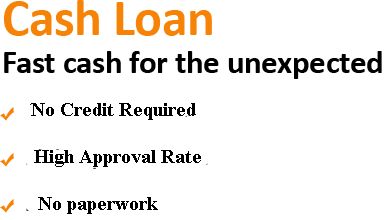How Much Does a $1,000 Loan Really Cost?
The true cost of a $1,000 loan depends on the lender, the APR, and the repayment term. Some loans cost only a few dozen dollars in interest, while others can cost hundreds if the APR is high or the repayment period is short. Understanding the real cost helps you avoid expensive traps and choose a loan that fits your budget. With EasyFinance.com, a BBB-accredited platform, you can compare transparent $1,000 loan offers and avoid hidden fees or inflated rates.
What Determines the Cost of a $1,000 Loan?
Several factors shape how much you will pay:
- APR: Lower APRs mean lower total cost; higher APRs raise the price significantly.
- Loan term: Shorter terms mean higher monthly payments but lower overall interest.
- Loan type: Installment loans, emergency loans, and no-credit-check loans differ in cost.
- Your credit profile: Better credit typically receives lower APRs.
- Fees: Some lenders charge origination fees or processing fees.
If your credit is limited or damaged, you may see higher-cost options such as no credit check loans, so comparing lenders is essential.
Typical APR Ranges for a $1,000 Loan
$1,000 loans can vary widely in cost based on lender type:
- Online installment lenders: 15% to 60% APR
- No-credit-check lenders: 100% to 400% APR
- Payday-style lenders: Very high APR with a lump-sum repayment
- Credit unions: 8% to 18% APR (usually lowest-cost option)
Borrowers seeking fast funding may choose options like same day loans, but these often cost more than standard installment loans.
How Loan Term Affects the Total Cost
Here’s how term length changes the real price:
- 3-month term: Higher monthly payments, lower total interest
- 6-month term: Balanced payments and cost
- 12-month term: Lower monthly payments, higher total cost
Borrowers needing the fastest approval may consider options like 1000 loan no credit check, which often provide short-term repayment schedules.

Example: What a $1,000 Loan Might Cost
Scenario 1: Affordable Installment Loan
- $1,000 borrowed
- APR: 24%
- Term: 6 months
- Total cost: Approximately $113 in interest
Scenario 2: Higher-Cost Loan
- $1,000 borrowed
- APR: 120%
- Term: 6 months
- Total cost: Around $360+ in interest
Scenario 3: Short-Term Payday-Style Loan
- Single payment due in 14–30 days
- Fee-based structure
- Total cost: $150 to $300+ in fees
If that's too costly, some borrowers take a smaller option like a 255 payday loan instead of borrowing the full $1,000.
How Fees Affect the Cost
- Origination fees: Usually 1% to 8% of the loan amount
- Late fees: Applied if you miss a payment
- Non-sufficient funds fees: If a debit fails
Loans with no credit check or high-risk approvals may include additional fees, which increase the real cost. Some borrowers explore tribal loans online for flexible approvals, but these can have higher fees and APRs.
How to Lower the Cost of Your $1,000 Loan
- Choose the lowest APR possible. Compare multiple lenders through EasyFinance.com.
- Select the right term. Shorter terms usually cost less overall.
- Avoid no-credit-check loans unless necessary.
- Borrow only what you need. A 500 dollar loan may be enough.
- Repay early if allowed. Many lenders do not charge early payoff fees.
- Maintain an active bank account. Avoid overdrafts before applying.
Some borrowers who need extremely fast service may turn to 1000 loan same day options, but comparing costs is still important.
Is a High-APR Loan Ever Worth It?
Sometimes, yes — especially if you need the funds to prevent a more expensive issue such as an eviction, car breakdown, or utility shutoff. But high APR loans should only be used when no better option exists.
Low-Cost Alternatives
- Credit union personal loans
- Borrowing a smaller loan amount
- Negotiating with creditors for more time
- Using earned wage access tools
- Exploring community assistance resources
- Short-term alternatives like payday loans online no credit check (with caution)
How EasyFinance.com Helps You Compare Costs
EasyFinance.com makes it simple to compare the cost of $1,000 loans, including:
- APR and repayment term
- Total estimated cost
- Monthly payment options
- Funding speed
Because EasyFinance.com is BBB-accredited, you can trust that the lenders shown are transparent and legitimate.
Key Insights
- APR and loan term determine the true cost of a $1,000 loan.
- Installment loans are generally the most predictable and affordable structure.
- No-credit-check and high-risk loans cost significantly more.
- Borrowing less — or repaying early — can reduce total expense.
- EasyFinance.com helps you compare costs and choose the best loan for your situation.
FAQ
What is the lowest-cost way to borrow $1,000?
Credit union installment loans or low-APR online installment loans are usually the most affordable.
What is the most expensive way to borrow $1,000?
Payday-style or no-credit-check loans often carry the highest APRs and fastest repayment terms.
Can I repay early to reduce cost?
Yes. Many lenders allow early payoff without penalties, reducing interest charges.
Does my credit impact the cost?
Yes. Better credit leads to lower APRs, but bad-credit options exist through no credit check lenders.
Does EasyFinance.com show total loan cost?
Yes. EasyFinance.com provides clear cost comparisons so you can choose the most affordable $1,000 loan.







